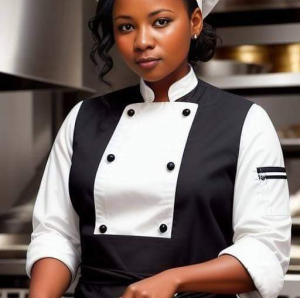FOOD AND BEVERAGE SERVICE
Completion requirements
3. Food and beverage service areas and equipment
3.2. Stillroom
The stillroom provides items of food and beverages required for the service of a meal that are
not catered for by the other major departments in a foodservice operation, such as the kitchen,
larder and pastry. The duties performed in this service area will vary according to the type of
meals offered and the size of establishment concerned.
Staffing
In a large establishment a stillroom supervisor is in charge of the stillroom. Depending on
its size and the duties to be performed, the stillroom supervisor may have a number of staff
under their control. The person in charge is responsible for the compilation of work rotas for all
stillroom staff so that all duties are covered and the area is staffed throughout the whole of the
service period. The stillroom supervisor is also responsible for ordering supplies from the main
dry goods store and the effective control of these items.
Because of the number of hours that the stillroom has to remain open and to ensure it is run
efficiently, staff may be required to work on a shift basis.

Equipment
The equipment found in a stillroom is fairly standard and there tends to be a considerable
amount needed because of the wide range of food items offered and the need to ensure their
proper storage, preparation and presentation. The following are examples of items that might
be needed.
l Refrigerator for storage of milk, cream, butter, fruit juices, etc.
l Hot and cold beverage-making facilities.
l Large double sink and draining board for washing-up purposes.
l Dishwasher of a size suitable for the stillroom but large enough to ensure efficient turnover
of equipment.
l Salamander or toasters.
l Sandwich toaster.
l Bread slicing machine.
l Worktop and cutting board.
l Storage space for small equipment such as crockery, glassware and cutlery and tableware.
l Storage cupboard for all dry goods held in stock and for paper items like doilies and napkins.
l Coffee grinding machine to ensure the correct grind of coffee for the brewing method.
l Ice maker.
Provisions
As a basic guide, the following food items would normally be dispensed from the stillroom.
l All beverages such as coffee, tea, chocolate, tisanes, Bovril, Horlicks, Ovaltine and other
drinks.
l Assorted fruit juices: orange, tomato, pineapple and grapefruit.
l Milk, cream and alternatives.
l Sugars: loose, pre-wrapped portions, brown coffee crystals, Demerara, etc., and alternatives.
l Preserves: marmalade, cherry, plum, raspberry, strawberry, apricot and honey. For the
purpose of control and to reduce wastage, many establishments now offer pre-portioned jars
or pots of jams or preserves at breakfast and for afternoon tea, rather than a preserve dish.
l Butter: either passed through a butter pat machine, curled or pre-wrapped portions and also
butter alternatives.
l Sliced and buttered brown, white and malt bread.
l Rolls, brioche and croissants.
l Bread substitute items: gluten free, rye, rice crackers, etc.
l Dry crackers, digestive and water biscuits for service with cheese; sweet biscuits for service
with early morning and afternoon teas and coffees.
l Assorted breakfast cereals: cornflakes, Weetabix, muesli and so on. In many establishments
cereals of all types are offered in pre-wrapped, portion-controlled packets.
l Toasted scones and teacakes.
l Pastries, gâteaux and sandwiches.
Control
There are two main ways of controlling goods to be issued from the stillroom.
1 If a foodservice area requires items such as butter, sugar, preserves, etc., in bulk, a requisition
signed by a supervisor is required before the stillroom will issue the items.
2 Upon receipt of a waiter’s check, tea, coffee or any other beverage required in the necessary
portions will be dispensed.
